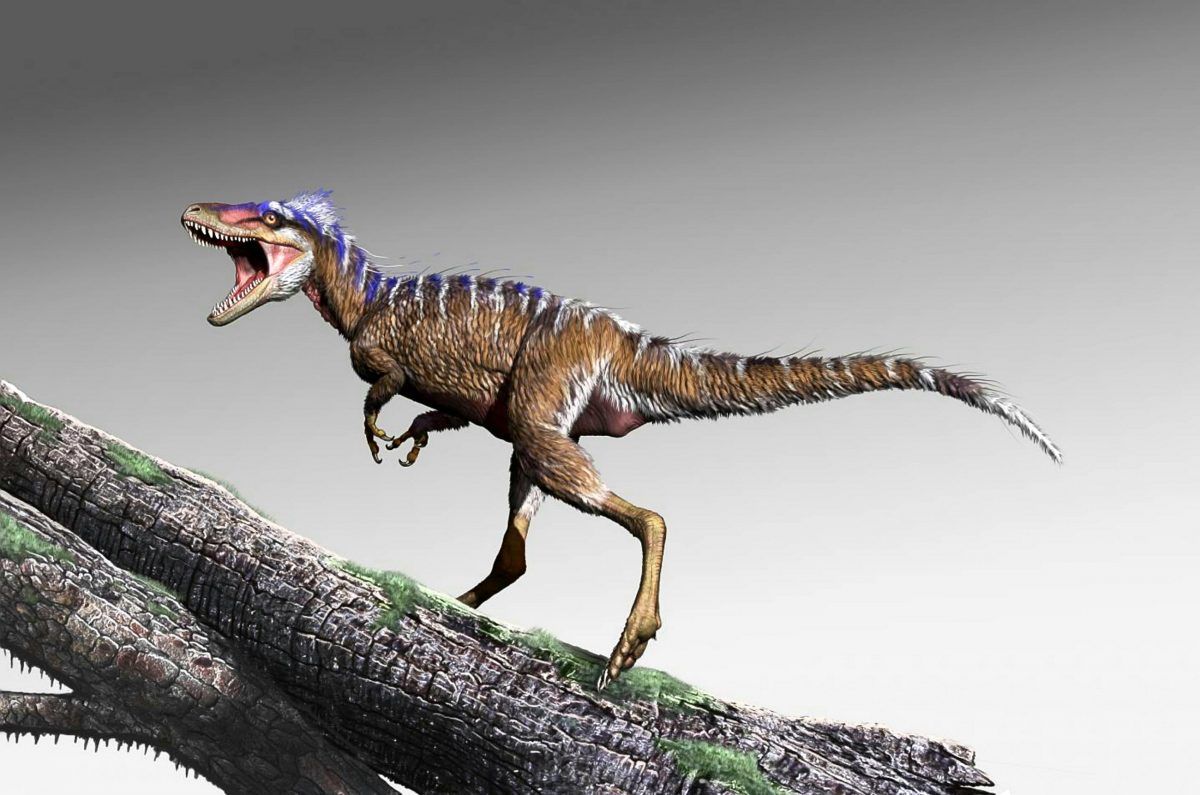
A mini-me T-rex which as the ancestor of the tyrant king of dinosaurs has been discovered by scientists.
The small but speedy flesh-eater was the size was a modern mule deer native to western North America being just up to four foot tall and weighing around 180 pounds.
When it lived 97 million years ago it was not at the top of the food chain as giant allosaurs were the apex predators.
But the fossil discovery fills in a 70 million year gap in the fossil records linking early tyrannosaurs to the world famous T-rex.
How and when allosaurs were replaced by tyrannosaurs and how its lineage arose has been a scientific mystery.
The newly discovered diminutive tyrannosaur lived near the end of the allosaurs and the evolutionary beginnings of the Earth’s deadliest tyrant lizards.
Because of this the remains have been named Moros intrepidus – “harbinger of doom.”
It was key to how T-rex rose to power, paleontologist said.
The fossils were found in modern day Utah when the area was a lush, deltaic environment during the Cretaceous period.
Assistant Research Professor Dr Lindsay Zanno at North Carolina State University said: “With a lethal combination of bone-crunching bite forces, stereoscopic vision, rapid growth rates, and colossal size, tyrant dinosaurs reigned uncontested for 15 million years leading up to the end-Cretaceous extinction – but it wasn’t always that way
“Early in their evolution, tyrannosaurs hunted in the shadows of archaic lineages such as allosaurs that were already established at the top of the food chain.”
The lead author and head of paleontology at the North Carolina Museum of Sciences added medium-sized, primitive tyrannosaurs have been found in North America dating from the Jurassic (around 150 million years ago).
By the Cretaceous – around 81 million years ago – North American tyrannosaurs had become the enormous, iconic apex predators we know and love.
Yet the fossil record between these time periods has been a blank slate, preventing scientists from piecing together the story behind the ascent of tyrannosaurs in North America.
Prof Zanno said: “When and how quickly tyrannosaurs went from wallflower to prom king has been vexing paleontologists for a long time.
“The only way to attack this problem was to get out there and find more data on these rare animals.”
A decade of searching unearthed teeth and a hind limb from the new tyrannosaur inrocks deposited at the dawn of the Late Cretaceous.
The lower leg bones of Moros were discovered in the same area where she had previously found Siats meekerorum, a giant meat-eating carcharodontosaur that lived during the same period.
Morios would have been over seven years old and nearly full-grown when it died and stood only three or four feet tall at the hip, about the size of a modern mule deer.
Prof Zanno added: “Moros was lightweight and exceptionally fast.
“These adaptations, together with advanced sensory capabilities, are the mark of a formidable predator.
“It could easily have run down prey, while avoiding confrontation with the top predators of the day.
“Although the earliest Cretaceous tyrannosaurs were small, their predatory specialisations meant that they were primed to take advantage of new opportunities when warming temperatures, rising sea-level and shrinking ranges restructured ecosystems at the beginning of the Late Cretaceous.
“We now know it took them less than 15 million years to rise to power.”
The bones of Moros also revealed the origin of T. rex’s lineage on the North American continent.
When the scientists placed Moros within the family tree of tyrannosaurs they discovered that its closest relatives were from Asia and crossed the Alaskan land bridge.
Prof Zanno said: “T. rex and its famous contemporaries such as Triceratops may be among our most beloved cultural icons, but we owe their existence to their intrepid ancestors who migrated here from Asia at least 30 million years prior.
“Moros signals the establishment of the iconic Late Cretaceous ecosystems of North America.”
The study was published in the journal Communications Biology.
By Tony Whitfield